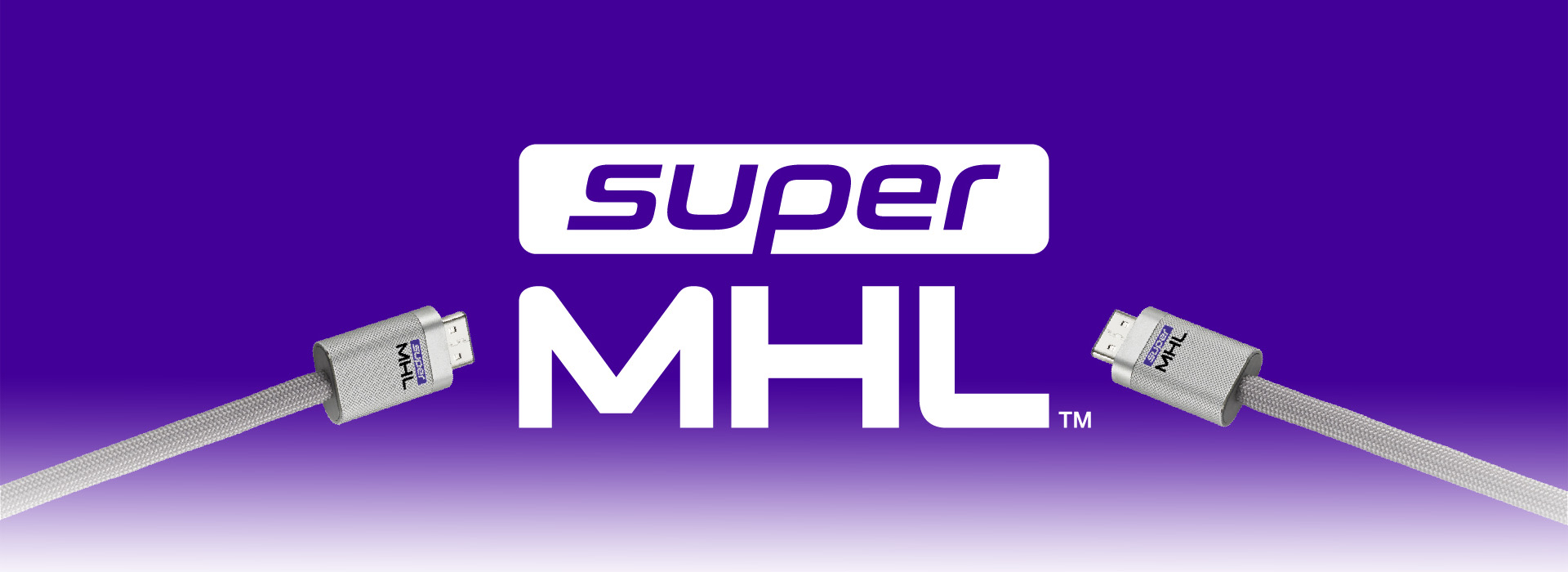Silicon Image Delivers 8K SuperMHL Compatible Chip
Silicon Image announced its new chip, the Sil9779, which it says is the first to be compliant with the SuperMHL standard.
Since 2008, Silicon Image has worked to develop MHL, a video output alternative to HDMI that's designed for mobile devices. In addition to being able to work with various types of connectors that could be smaller than HDMI, such as micro-USB, it also allowed for the mobile devices to charge while connected to an external display.
The MHL Consortium, which was formed to develop the MHL standard, announced an update to the standard in January known as SuperMHL, which increased the resolution to 8K, improved audio features, quadrupled the power for charging devices to 40W, and brought numerous other improvements.
Like previous variations of MHL, several different types of connectors can be implemented by mobile device manufacturers in conjunction with SuperMHL, but the most hotly-anticipated one is the USB Type-C connector.
"Silicon Image continues to help define and create new interfaces for tomorrow's home theater products," said senior director of marketing at Silicon Image, Cheng Hwee Chee. "8K is the highest display resolution on the market today, delivering 16x more pixels than 1080p. Our solution enables manufacturers to build products that meet customer demand and anticipate future needs."
Although MHL was developed as a mobile-optimized HDMI alternative, it is interesting to see now that with SuperMHL, MHL offers higher resolutions and better features than HDMI. Not that it matters a great deal just yet; the price of 4K displays is still high, and very few 8K displays have been created, so although SuperMHL has an advantage with higher resolutions, it cannot currently leverage this advantage against HDMI.
With this new chip from Silicon Image, manufacturers can begin adding SuperMHL support into products, but there was no indication of when devices using these chips will start to arrive on the market.
Get Tom's Hardware's best news and in-depth reviews, straight to your inbox.
Follow us @tomshardware, on Facebook and on Google+.
-
zinabas Its not competing, its not even in the same areas as hdmi, it can do everything hdmi can but hdmi either cannot or will not be able to the things this was designed to do such as alloy power delivery and use USB Type C connectors (which is the go to port for all smart phones now... except Apple, who won't use the better alternative because then they'll have to sell their unbranded cheap chinese chargers at 1/4 the price they're used to)Reply -
WFang ReplyIts not competing, its not even in the same areas as hdmi, it can do everything hdmi can but hdmi either cannot or will not be able to the things this was designed to do such as alloy power delivery and use USB Type C connectors (which is the go to port for all smart phones now... except Apple, who won't use the better alternative because then they'll have to sell their unbranded cheap chinese chargers at 1/4 the price they're used to)
Actually the next Apple phone coming this fall is said to be using the USB Type C connector and their new macbook uses it too... so I think it is safe to expect that Apple is also moving towards this tech... -
InvalidError Reply
While it should become the go-to port for new phones and tablets, I doubt it will actually become the go-to port for another year or two due to the current lack of Type-C accessories and people's general dislike for having to carry tons of adapter or cross-standard cables.15497724 said:and use USB Type C connectors (which is the go to port for all smart phones now... -
WFang Reply15498961 said:
While it should become the go-to port for new phones and tablets, I doubt it will actually become the go-to port for another year or two due to the current lack of Type-C accessories and people's general dislike for having to carry tons of adapter or cross-standard cables.15497724 said:and use USB Type C connectors (which is the go to port for all smart phones now...
TLDR; I think the Type-C connector will very quickly make its way to new devices from low range all through high end, but only high end devices will support the new 3.1 standard for speed and power. (Connector and cables are backwards compatible with previous gen client/host interface IC's).
Given that the new (high-end) models coming out either have confirmed or are expected to have usb-c, I think it will happen faster than you think.
The fact that USB-c connectors and cables can be used on USB 3.0 (or 2.0) hosts/clients, this means that even mid and low end devices can switch to that connector even if the speed/throughput/power remains at the previous generation. Given that the new connector is (claimed to be) superior in every way, from durability to usability, I think the market will see a huge uptick in both devices and accessories this year.
Keep in mind that the highest cost (in terms of engineering and design work) isn't dependent on the connector form-factor, but lies with issues getting 3.1 speeds properly supported at the trace/board level. -
yumri It sounds great but so far i do not see anything that is able to use it so it is a great theoretical cable standard but not useable until something is compatible with it that can connect to another device that is compatible with it too.Reply -
cats_Paw Numbers wars! Lets put 500K resolutions in 7 inch tablets. YEAH!Reply
While all this madness is going on, I will be quietly ripping the benefits of the price drops in 1080p gear.
Thx Silicon Image! :D.
